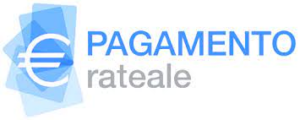Using Fibonacci Retracement Levels To Find Support and Resistance
Ottobre 28, 2022You should feel just as comfortable using this technique on intra-day data as you would on daily or weekly prices. If you are an active trader you might have noticed that financial asset prices follow certain patterns. A pattern that consistently occurs is consolidation between price ranges. In the next lesson, we’ll show you what can happen when Fibonacci retracement levels FAIL. Here we plotted the Fibonacci retracement levels by clicking on the Swing Low at .6955 on April 20 and dragging DOGE the cursor to the Swing High at .8264 on June 3.
Though not an official Fibonacci ratio, traders also like to use the 50.0% ratio because often, the price will retrace by around GMT 50% before continuing its original trend. A trader can utilize Fibonacci support and resistance levels in a number of ways. One of the more obvious benefits is to execute opening trades around these levels.
How to trade with Fibonacci
Other ratios are also used, such as the 50% ratio first described in Dow Theory, as well as the 23.6% ratio, which represents a short-term target. When you draw Fibonacci retracement lines, you will measure the peak to trough of the move that you are targeting. The difference between the high and the low is then multiplied by 61.8% and 38.2%. Here’s how you can scan for the best undervalued stocks every day with Scanz. Check out this step-by-step guide to learn how to scan for the best momentum stocks every day with Scanz. Follow this step-by-step guide to learn how to scan for hot stocks on the move.
Gold Is Almost Ready to Rally – Investing.com
Gold Is Almost Ready to Rally.
Posted: Fri, 24 Feb 2023 17:51:00 GMT [source]
Each of these levels represents potential support on the chart. You will find that once you plot effective Fibonacci levels on wider time frames, they won’t have to be redrawn for months even years until the price breaks through the whole range. As you gain more confidence in Fibonacci retracements, you can continue plotting them on more stocks and continue to incorporate them into your trades. Most charting platforms offer some kind of Fibonacci drawing tool.
What are fibonacci retracement levels and extensions in trading?
The indicator will mark key ratios such as 61.8%, 50.0% and 38.2% on the chart. If you want to do some backtesting to get some data on sizing up with one of your strategies you can use fibonacci levels. If there are ratings of the most popular instruments for analysis, Fibonacci retracement levels are in all of them. Today we publish an expanded article about significance of Fibonacci numbers in trading.
Fib retracements are internal retracements since they measure a price move that exists within a prior leg. The most common Fibonacci retracement levels include 23.6%, 38.2%, 50%, 61.8%, and 78.6%. Although the 50% level is not an actual Fibonacci based ratio, it has many important characteristics, and as such, is included as a level within most Fibonacci retracement tools. Unlike moving averages, Fibonacci retracement levels are static prices. This allows quick and simple identification and allows traders and investors to react when price levels are tested.
So it’s now time to start building a Fibonacci retracement trading plan. Firstly, we will plot our Fibonacci levels on our desired price chart, keeping in mind, that will need to select the most significant swing low and swing high. Once we’ve done that, we will monitor the price action at these important junctures. What we want to look for are two primary conditions at or near an important fib retracement level. They are used to identify potential resistance levels exceeding the swing high or to identify support levels below the swing low. They are, however, much more speculative than the Fibonacci retracement levels.
These retracement levels provide a good opportunity for the traders to enter new positions in the trend direction. The Fibonacci ratios, i.e. 61.8%, 38.2%, and 23.6%, help the trader identify the retracement’s possible extent. If a market has fallen, then Fibonacci fans will apply the retracements to bounce back up. If it rallies 38.2%, then those looking at Fibonacci retracements will expect the rally to run out of steam. If that level is broken, then the 50% level is where traders would look for the market to turn back down. Blue Fibonacci levels are built by a day chart where points 1 and 2 are beginning and end of the correction level.
Fibonacci Retracement Strategy – Trade Example
We can see stuck long positions in point 3 in the cluster chart and exhaustion of sells in point 4. Retracement is a popular technical tool for investors to determine the Fibonacci levels, at which an uptrend or downtrend is likely to rebound or reverse. The retracement pattern is created using the Fibonacci numbers, introduced by Italy-based mathematician Leonardo Fibonacci in the 13th century. Notice the shallowest retracement is the 23.6% level, followed by the 38.2% level.
When this happens, a position can be opened in the direction of the trend. Additionally, Fibonacci levels play a role in other areas of technical analysis. For example, they are prevalent in Gartley patterns and Elliott Wave theory (examining long-term trends in price patterns and how they correspond with investor sentiment).
Allows for the precise placement of the fib retracement’s first point using a bar number and price. There are many unique characteristics of this set of numbers in both the financial markets and the natural universe. For example, when you divide one number within the series by the next number in the series, the result approaches .618, or 61.8%. While useful, Fibonacci levels will not always pinpoint exact market turning points. They provide an estimated entry area but not an exact entry point.
- In this example the swing high was used as the starting point and the swing low as the end point.
- As such, we would want to exit our short position just prior to that level.
- If the price starts rallying and goes to $20, that is an extension.
- Traders believe the Fibonacci series has its application in stock charts as it identified potential retracement levels.
The targets can be used to determine your risk versus reward ratio before entering a trade, as well as, an active management tool to uncover new levels of support and resistance. Retracement levels for a stock are drawn based on the prior bearish or bullish movement. While the retracement levels indicate where the price might find support or resistance, there are no assurances that the price will actually stop there.
Since all fibonacci retracement levels retracement levels could be unsymmetrical, pay attention to where the wave, by which you build levels, starts and ends. In case the trend is descending, there is 0% in the bottom and 100% on top. If someone gets confused with sides or used to build correction levels always in one direction, the trading and analytical ATAS platform can arrange mirror reflection of levels in one click. Fibonacci retracement strategy is more common in the stock market, whether it is an uptrend or downtrend. The nature of financial markets is such that each tradable asset rebounds or reverses upon reaching a certain retracement level.
The main use of these is that they act as levels of support and/or resistance when price is retracing back from an original advance or decline. These are key levels to take note of when price is correcting or experiencing a counter-trend bounce. The idea is that after an initial move , price will often retrace back towards the direction it came from.
Which is the strongest Fibonacci level for trading?
The best Fibonacci levels to watch for would be the 38.2%, 50%, and 61.8% retracement levels. This generally holds true within both uptrending and down trending markets. They represent the most likely turning points in the market following an impulsive price move.
The CD leg is just a 100% https://www.beaxy.com/ extension of the AB leg from point C. They work across all markets including Stocks, Futures, Options, Forex, and Crypto. The price was corrected to the level of 23.5 in point 2 and then again went up to the level of 100. Enables calculating the levels of the Fib Retracement in an alternative way when the logarithmic scale is on. The checkbox toggles the visibility of the trend line and switches beside set it’s color, opacity, thickness and style. These levels most frequently include 1.236, 1.382, 1.5, 1.618 and 2.618.
The first example shows how Fibonacci retracements can be used to identify multiple levels of support that can help predict the sawtooth pattern of an overall bullish movement. The idea behind it is that prices never move in a straight line. After a large price movement, a retracement may follow before the prevailing trend continues. Fibonacci retracement levels help traders identify where those levels of support and resistance are. Fibonacci is one of the most common and well known technical indicators used by traders when performing technical analysis. Fibonacci retracements are a popular form of technical analysis used by traders in order to predict future potential prices in the financial markets.
Do professionals use Fibonacci?
This is one of the most used indicators in technical analysis, which even professional traders cannot afford to use. In this article, we will tell you how to use the Fibonacci retracement to increase your chances of making a profit in trading.
Most charting platforms will plot these levels for you, so you won’t need to do the math. However, like any trading tool, Fibonacci should never be used alone. This Fibonacci ratio is found by dividing a number in the series by the number three places to the right. But before we get too involved in the details, let’s first talk about where Fibonacci levels came from. However if I have to put a minimum number to it then it would be 5 days.
While not a Fibonacci ratio, 0.5 is also an important retracement level, while 0 and 1 serve as anchors of the Fibonacci retracement tool. A Doji is a type of candlestick pattern that often indicates a coming price reversal. This pattern consists of a single candlestick with a nearly identical open and close. In this guide, we’ll explain what the doji candlestick is and how traders can interpret it.
There is no guarantee that the price will stop and reverse at a particular Fibonacci level or at any of them. The Fibonacci extension tool draws extension levels past the swing high or swing low. If you’ve ever traded stocks, you’ve probably used a market maker. Market makers are the middlemen of the stock market, and in most cases, these are firms, individuals, and or large corporations that facilitate transactions.
Nifty is at perfect sell entry zone now after completing 61.8% Fibonacci retracement from the all time high to recent lows.
Nifty heading bearish target of 14900 levels in the near term. This is my view.
— Arun Venkataraman (@sv_arunachalam) March 20, 2022
Drawing the Fibonacci retracement on a chart in your MT4 platform could not be easier. Clicking on it will enable you to go back to the chart to draw the Fibo levels. Simply click on the high/low and connect it with the other point. When you draw a Fibonacci retracement on your chart, you will notice that we do not actually use the numbers in the sequence. Instead, the ratios or differences between the numbers in the sequence are utilised. Chart 3 shows Target with a correction that retraced 38% of the prior advance.



